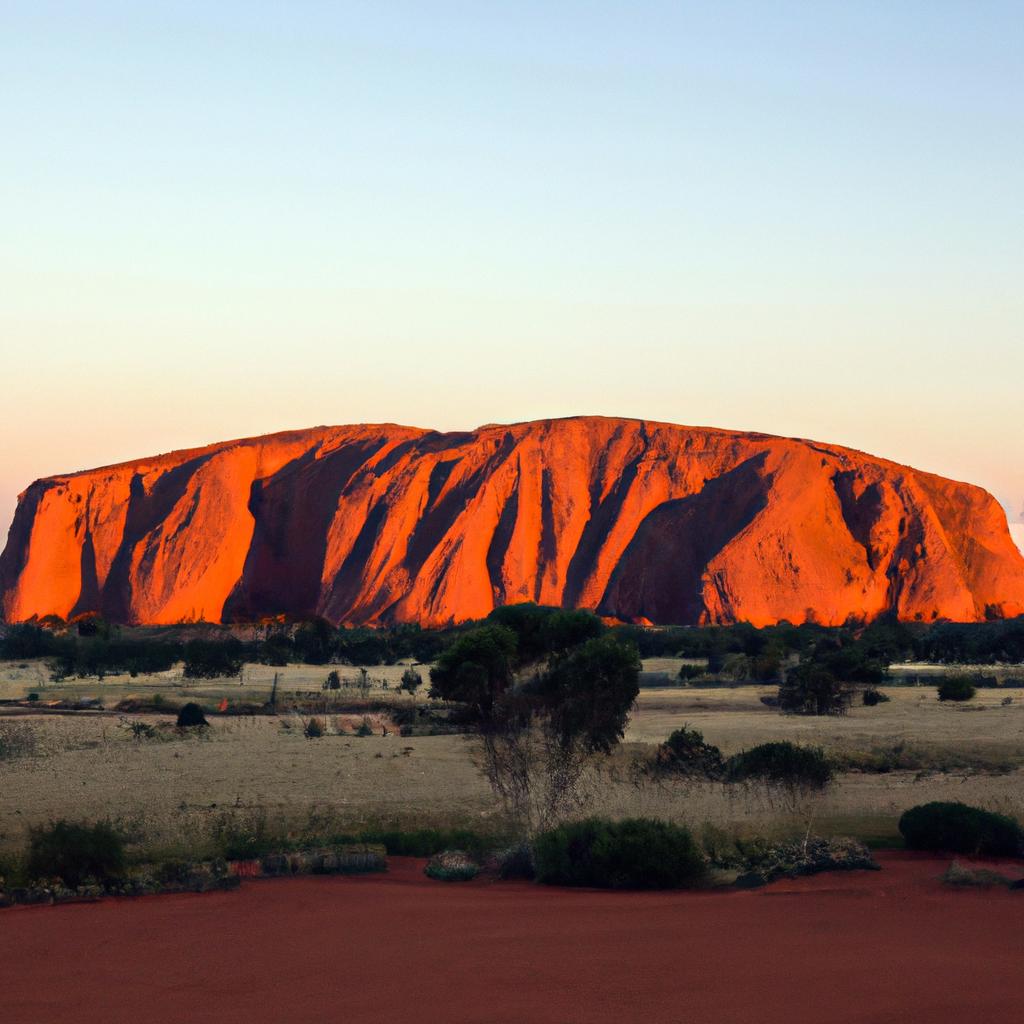Ayers Rock, also known as Uluru, is a colossal sandstone rock formation located in the heart of Australia. This iconic landmark, situated in the Uluru-Kata Tjuta National Park, is celebrated as one of the most remarkable natural wonders on Earth. With its unique geological features and deep cultural significance, Ayers Rock attracts tourists from around the globe and stands as a must-see destination for anyone visiting Australia.
The Majestic Ayers Rock (Uluru)
Ayers Rock (Uluru) mesmerizes visitors with its intricate network of patterns and textures, adorning its surface. This intricate geological masterpiece has a rich history spanning millions of years. It originated from the erosion of surrounding mountains, resulting in a colossal sandstone monolith that stretches 348 meters above the surrounding landscape. With a length of 3.6 kilometers and a width of 1.9 kilometers, Ayers Rock is one of the largest monoliths worldwide.
A Unique Geological Marvel
The rock’s surface showcases nature’s artistic prowess, exhibiting caves, waterholes, and eroded rock formations. Over millions of years, weathering and erosion caused by wind and rain shaped the rock into its present form. The sandstone layers, exposed over time, created caves, fissures, and natural sculptures. The rock’s striking red hue, attributed to iron oxide present in the sandstone, adds to its distinctive allure.
A Sacred Site for the Anangu People
For over 10,000 years, the Anangu people have called this region home. To them, Ayers Rock holds immense cultural and spiritual significance. According to their beliefs, the rock was created during the Dreamtime, a sacred period of creation. They believe it embodies their ancestral beings and consider it a living entity. Ayers Rock serves as a focal point for spiritual connection and is an essential site for various Anangu ceremonies that celebrate cultural events and mark significant life milestones.
Respecting Heritage and Cultural Traditions
Acknowledging Ayers Rock’s cultural importance, the Australian government officially recognized it as a sacred site in 1985. Ownership of the land was then restored to the Anangu people. This joint management ensures that Ayers Rock’s cultural and natural heritage is protected. Visitors are encouraged to respect the Anangu people’s cultural traditions and to learn about their way of life when exploring the Uluru-Kata Tjuta National Park.
Exploring the Wonders of Ayers Rock (Uluru)
Ayers Rock is a magnet for tourists, attracting over 400,000 visitors annually. Its allure lies not only in its natural beauty but also in the opportunity to delve into its cultural significance. Guided tours, hiking around the base, attending cultural events, and immersing oneself in the Anangu people’s traditions are just a few of the experiences that await visitors.
Sustainable Tourism and Conservation
Despite its popularity, Ayers Rock’s management ensures sustainable tourism practices that respect the rock’s cultural and natural heritage. Strict guidelines prohibit climbing the rock and emphasize respecting sacred sites. These regulations are in place to preserve Ayers Rock’s beauty and cultural significance for generations to come.
Preserving Ayers Rock (Uluru) for the Future
The Australian government and the Anangu people share a commitment to safeguarding Ayers Rock’s natural and cultural legacy. The rock’s management plan incorporates conservation measures to protect its unique flora and fauna while minimizing the impact of tourism on the environment. These efforts include limiting visitor numbers, reducing waste and energy consumption, and safeguarding the wildlife surrounding the rock.
A Thriving Future
Looking ahead, Ayers Rock’s management plan aims to balance tourism with conservation endeavors while providing economic benefits to the Anangu people. Their cultural tourism industry allows visitors to engage with the Anangu’s cultural knowledge and practices, ensuring that Ayers Rock’s heritage remains both preserved and respected.
In conclusion, Ayers Rock (Uluru) stands as an awe-inspiring natural wonder, impressing visitors with its remarkable geological features. Its cultural and spiritual importance to the Anangu people adds an extra layer of significance to the experience. With sustainable tourism practices and preservation efforts in place, Ayers Rock’s beauty and cultural heritage will continue to captivate and inspire for generations to come.
Visit TooLacks to explore more amazing destinations.


